A painter of mass M stands on a platfrom of mass m and pulls himself up by two ropes which hang over pulley as shown in fig. He pulls each rope with force F and moves upward with a uniform acceleration a. find a, neglecting the fact that no one could do this for long time.
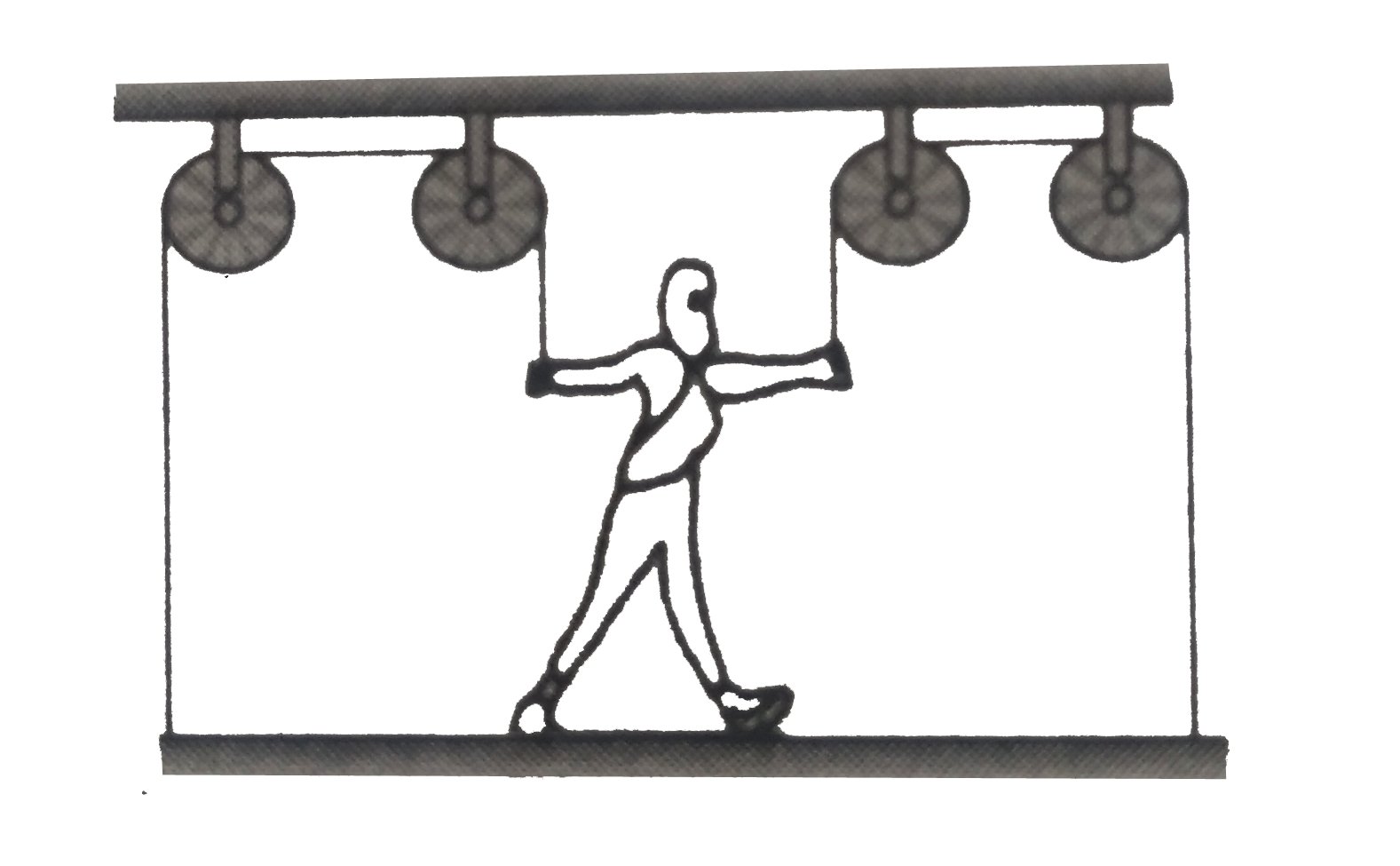
4F+(2M+m)gM+2m
4F+(M+m)gM+2m
4F−(M+m)gM+m
4F−(M+m)g2M+m
The correct Answer is:C
From fig.,
2F+N−Mg=Ma
2F−mg−N=ma
4F−(M+m)g=(M+m)a
a=4F−(M+m)gM+m.
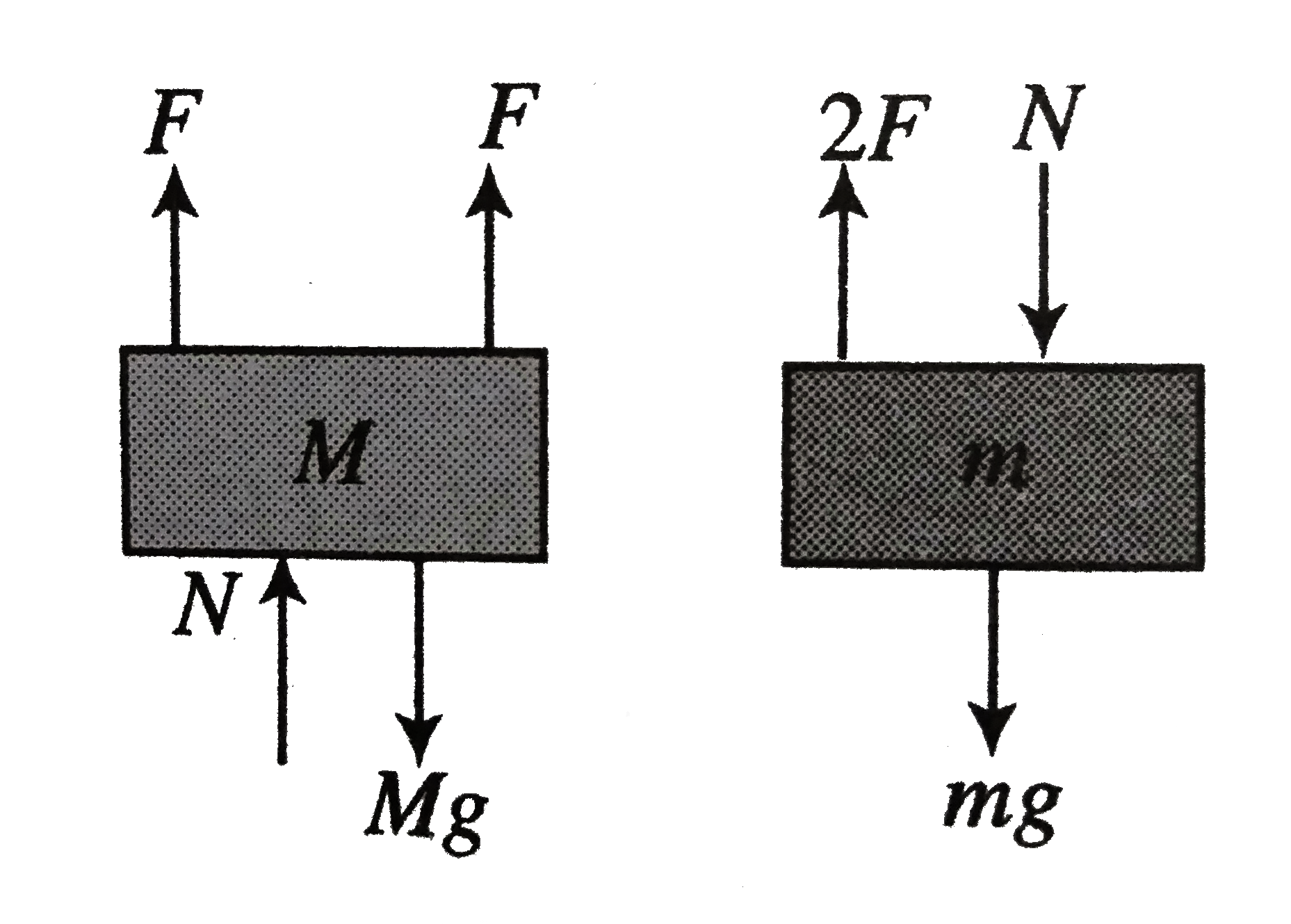
Topper's Solved these Questions
- BOOK - CENGAGE PHYSICS ENGLISHCHAPTER - NEWTON'S LAWS OF MOTION 1EXERCISE - Multiple Correct11videos
NEWTON'S LAWS OF MOTION 1
- BOOK - CENGAGE PHYSICS ENGLISHCHAPTER - NEWTON'S LAWS OF MOTION 1EXERCISE - Assertion-reasoning15videos
NEWTON'S LAWS OF MOTION 1
- BOOK - CENGAGE PHYSICS ENGLISHCHAPTER - NEWTON'S LAWS OF MOTION 1EXERCISE - Subjective15videos
NEWTON'S LAWS OF MOTION 1
- BOOK - CENGAGE PHYSICS ENGLISHCHAPTER - MISCELLANEOUS VOLUME 2EXERCISE - INTEGER_TYPE10videos
MISCELLANEOUS VOLUME 2
- BOOK - CENGAGE PHYSICS ENGLISHCHAPTER - NEWTON'S LAWS OF MOTION 2EXERCISE - Integer type1videos
NEWTON'S LAWS OF MOTION 2
Similar Questions
A man of mass m stands on a platform of equal mass m and pulls himself by two ropes passing over pulleys as shown in figure.If he pulls each rope with a force equal to half his weight ,his upwards acceleration would be
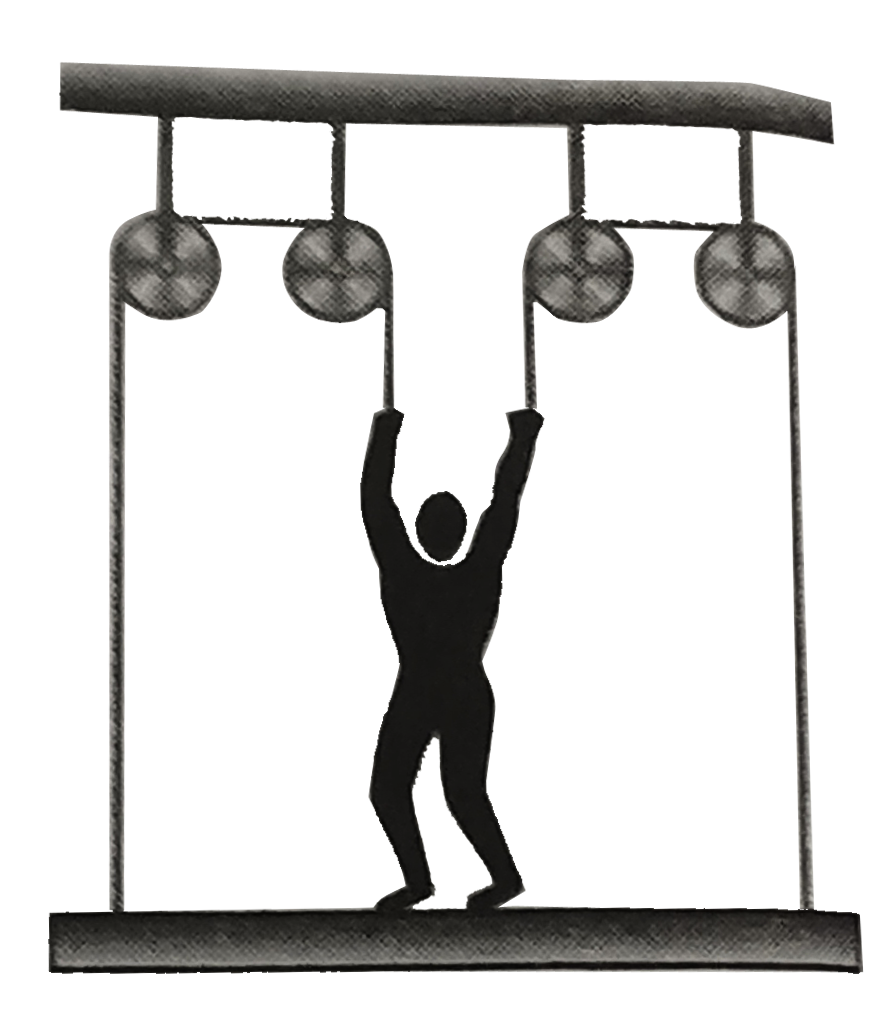 View Solution
View SolutionA man of mass m stands on a platform of equal mass m and pulls himself by two ropes passing over pulleys as shown in figure.If he pulls each rope with a force equal to half his weight ,his upwards acceleration would be
 View Solution
View SolutionA man of mass m stands on a platform of equal mass m and pulls himself by two ropes passing over pulleys as shown in figure.If he pulls each rop with a force equal to half his weight ,his upwards acceleration would be
 View Solution
View SolutionA man of mass m stands on a frame of mass M. He pulls on a light rope, which passes over a pulley. The other end of the rope is attached to the frame. For the system to be in equilibrium, what force must the man exert on the rope?
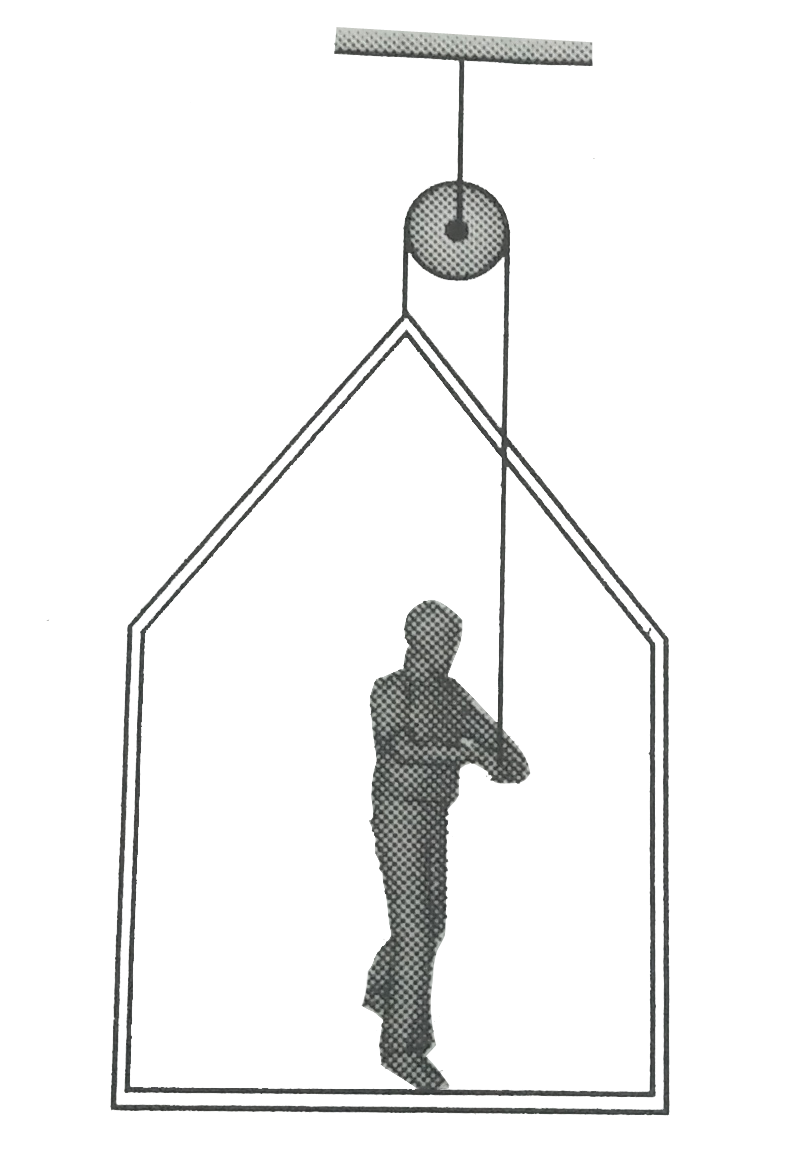 View Solution
View SolutionA mam of mass 50 g stands on a frame of mass 30 g. He pulls on a light rope which passes over a pulley. The other end of the rope is attached to the frame. For the system to be in equilibrium what force man must exert on the rope?
 View Solution
View SolutionBlock A of mass m/2 is connected to one end of light rope which passes over a pulley as shown in fig. A man of mass m climbs the other end of rope with a relative acceleration of g/6 with respect to rope. Find the acceleration of block A and tension in the rope.
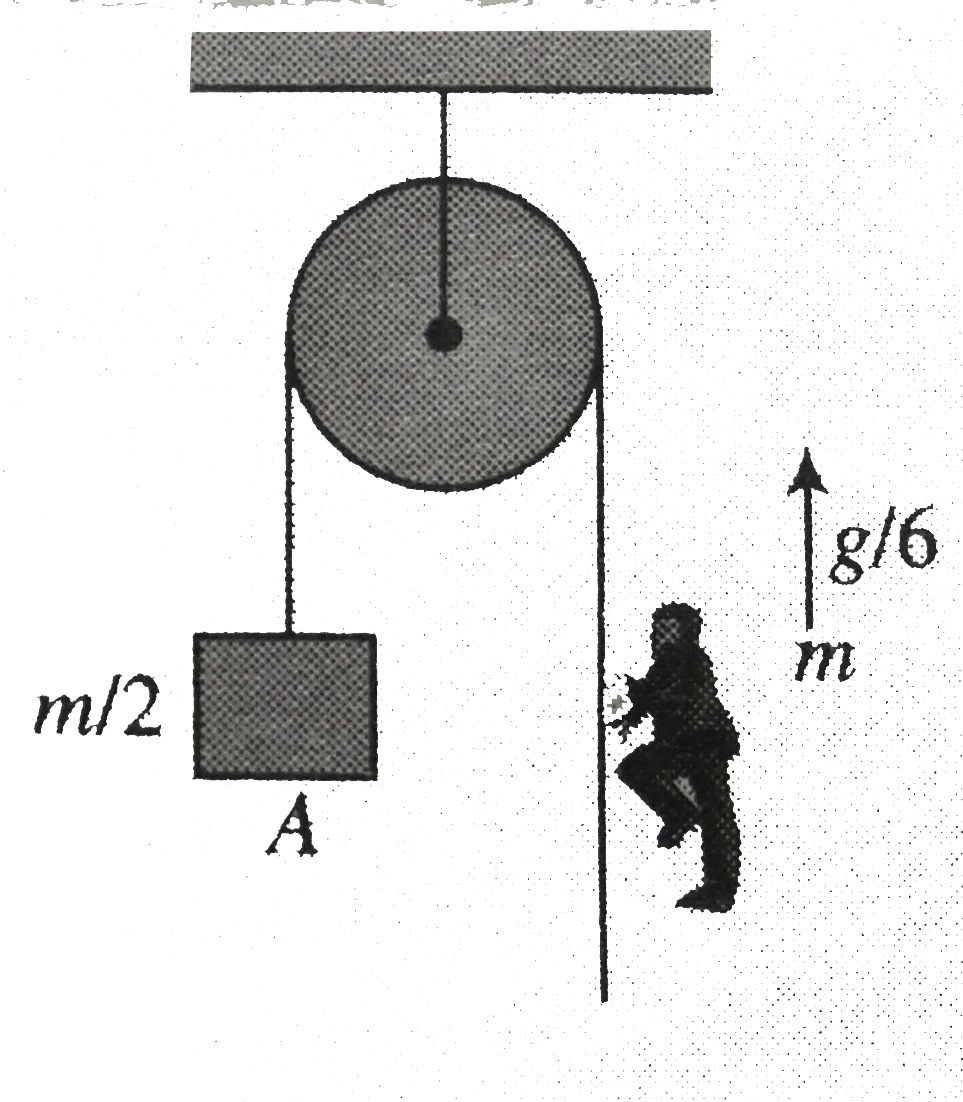 View Solution
View SolutionA uniform rope of mass m hangs freely from a ceiling. A bird of mass M climbs up the rope with an acceleration a. The force exerted by the rope on the ceiling is
View SolutionA 50kg person stand on a 25kg platform. He pulls on the rope which is connected to the rope which is attected to the plateform via the frictionless pulley as shown in the figure. The platform moves upwards at a steady rate if the force with which the person pulls the rope is
 View Solution
View SolutionA 50kg person stand on a 25kg platform. He pulls on the rope which is connected to the rope which is attached to the platform via the frictionless pulley as shown in the figure. The platform moves upwards at a steady rate if the force with which the person pulls the rope is
 View Solution
View SolutionTwo bodies of masses m1 and m2 are connected a light string which passes over a frictionless massless pulley. If the pulley is moving upward with uniform acceleration g2, then tension in the string will be
View Solution

